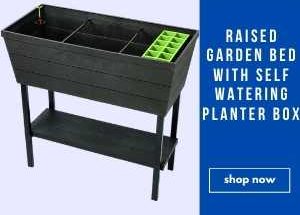Onions are an important part of our diet. To grow onions in your own garden is very easy. Most people think that planting the onion is very difficult but the onion bottoms which we throw in the trash can be used in the growing of fresh onion plants.
This waste is a means of planting onions. It works as a free seed for you, as long as you have one onion it is not difficult to grow another. You have an option to grow onions from seed which you can buy.
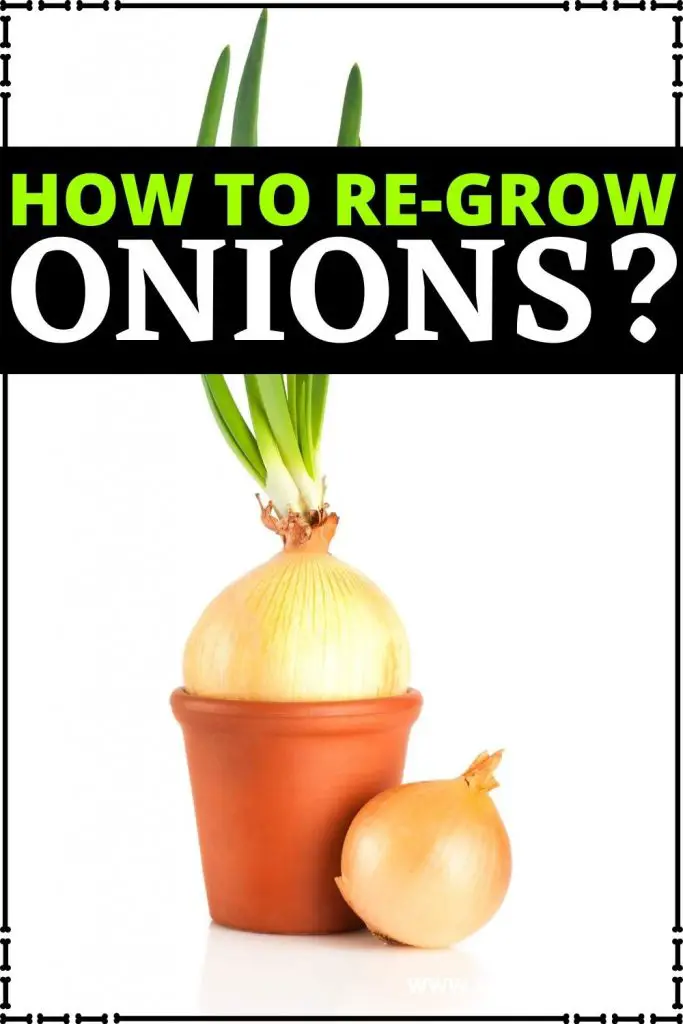
It is very easy to buy onions from the stores at a reasonable price but growing vegetables at your home are fun, along with you can get free vegetables for your kitchen. The bottom of the onion, planting in high-quality soil with proper care and water regularly, gives you fresh onions in 90 to 120 days.
In this way, you can avail the opportunity of getting fresh vegetables which cannot be obtained from the market. This article is going to be very interesting for onion lovers.
Read More: How to Grow Radishes From Scraps?
Size, Colour, and Flavour
The small size of onion is called bunching onions. Some onions yield round bulbs and are spindle in shade, these are called picking onions. The medium size of onions is called storage onions. The large size of onions is Bermuda and Spanish.
Onion can be found in different colors like white, yellow, red, or purple. White onions have very sharp and pungent flavor but they have papery skin. Red and yellow onions have the same flavor, but the layers of red onion are less tender.
Varieties Of Onions You Can Grow In Your Vegetable Garden
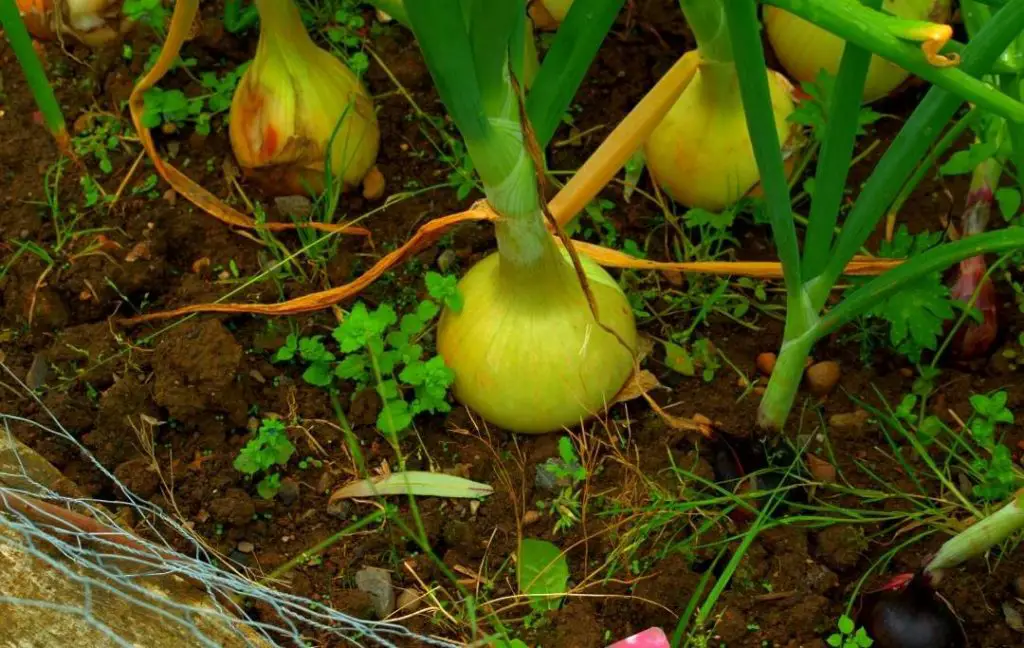
There are different varieties of onion, here we will discuss, few for your knowledge which will help you to decide the suitable variety for your garden.
Sweat Onions or Bermuda Onions:
In baking and stuffing dishes you can use this type of onions. Their size is very large.
Red Onions or Red Wing
If you like to eat onions in salad or sandwiches then the best option is red onion. Instead of cooking, you should eat it raw.
Pearl onions
They are small in size just like a pearl if you want to make pickling of the onion, use them as they are best for your jar.
Sweat Onions or Spanish Onions
Bermuda onions are good for stuffing but Spanish onions are also good for this job. They are sweet and have lower water content.
Welsh Onion
They just die green onion, they are perfect for making stir fry.
Leeks
Another type of onion which is very good for making different dishes like soup.
Also Read: How to Grow Lettuce from Seed At Home
When to Plant Onion?
The best time for planting onion is mid-March to mid of April but you can also plant it in autumn from September to October. You can plant onion sets 3 to 4 months before when you need mature bulbs of this vegetable. You can harvest green onions within three to four weeks.
Method of Growing Onions
You should prepare bottoms of onions for planting whether in your raised beds or in-ground beds or even indoors.
The Things You Need
- Onion
- A clean and sharp knife
- A cutting board
- A bowl, glass or cup for dipping
- 4 toothpicks
Procedure
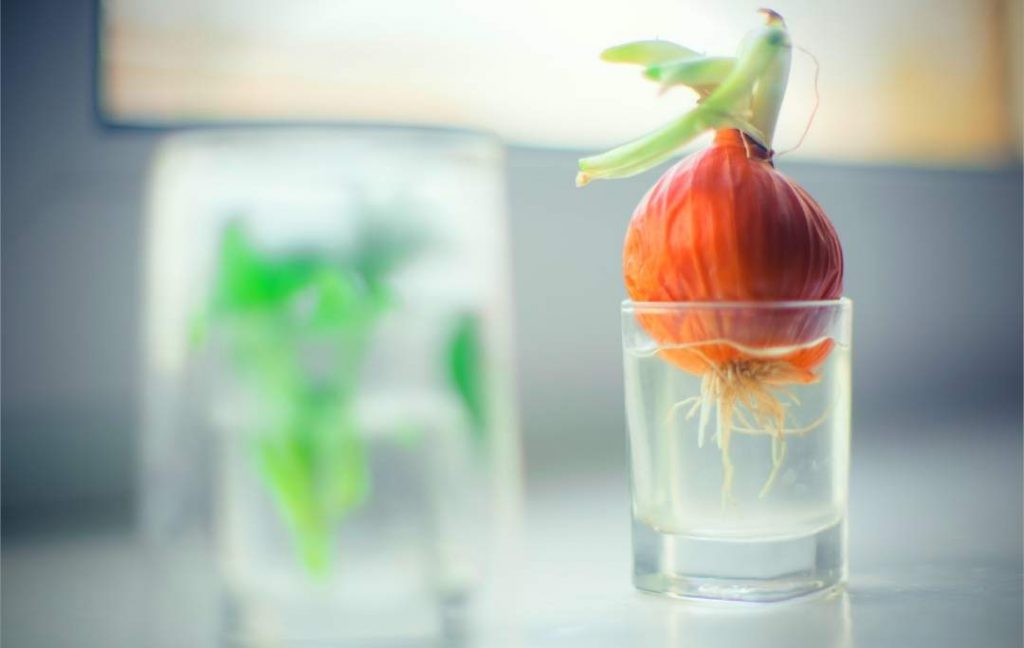
1- After peeling the onion, place it on the cutting board. With the help of a sharp knife, chop the onion about 1 inch or 2.5 cm from the bottom. The size of the bottom piece must be according to the mentioned above because in this way you will succeed to grow a healthy onion. A little care will not waste your hard work.
2- Now leave this onion bottom to dry for 12 to 24 hours.
3- At this stage, poke 4 toothpicks in this way, that all these toothpicks should be equally spaced and make a sign resembling “X”.
4- Now the time comes to hang the onion over a small bowl of water. You can also use a glass or a cup according to the size of your onion. Position the onion so the bottom just touches the top of the water. Please place the bowl in the sunlight. You will have to wait for 3 to 4 days. When small roots begin to emerge remove old onion scales. From a single onion bottom, you can get more than one plant. Now plant it in the prepared growing raised bed.
5- Plant the onions in rows, keep a distance 4 to 6 inches between two holes, which you make already for plantation. For green onions, this distance may reduce to 2 inches. There is a gap of 12 to 16 inches between two rows.
6- Water the bed before planting. The onion needs enough water that the soil is moist to the touch, but not soaking wet. New roots and leaves can be seen after a few days. Now you can get an endless supply of onions without buying seeds from the store. This is a cheap way of growing a full bed of onions for your kitchen.
Read More: 10 Things To Do For Your Kitchen Garden In Winter
Important Factors for Healthy Onion Plants
Plants need care and attention just like a human being. Besides this, many y factors which have a direct effect on the onion plant. These factors are water, soil, temperature, sunlight, and climate or location.
Soil
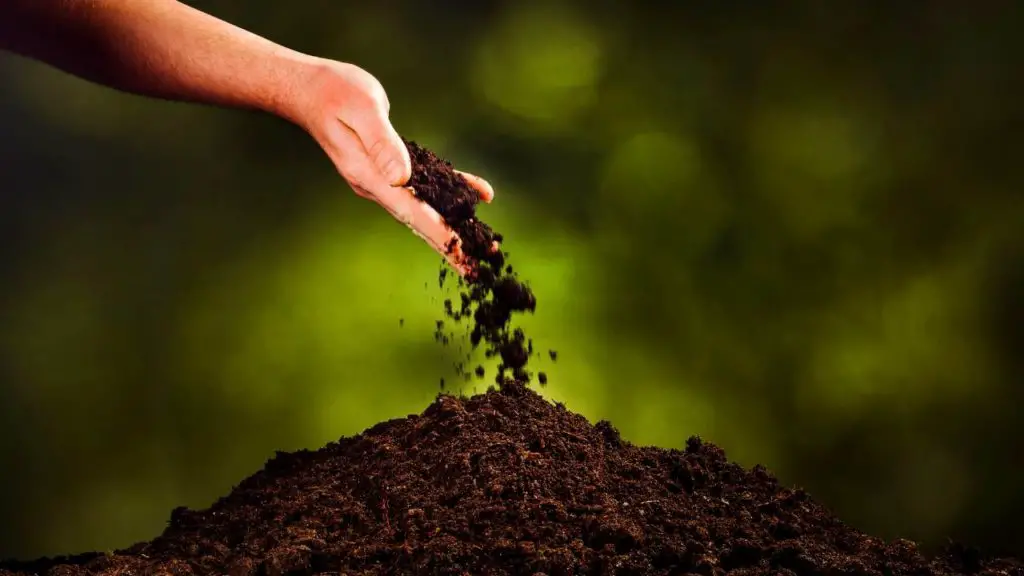
You have made your decision to plant onion in your beds. If you are not using high-quality soil so how can it possible that you will get healthy vegetables from your garden. Onion likes well-drained and rich soil with a PH of 6.0 to 6.5.
Organic matter can increase the fertility of your garden soil. In raised beds, you can manage your soil quality. If the depth of your soil is 8 to 10 inches you can 2 inches layer of compost.
Compost makes your soil rich, you can also use many things like manure, wood chips, hay, and even your garden’s dry leaves. These things are easily available. Onion needs nitrogen, it means nitrogen fertilizer is best for them, you can buy it from stores and nurseries.
Fertilizer can increase the yield of onion plants. 2 to 3 pounds of fertilizer is enough for every 100 square feet of onion bed. By little hard work and adding essential nutrients, the soil will become well-drained and rich which is favorable for onions.
Water
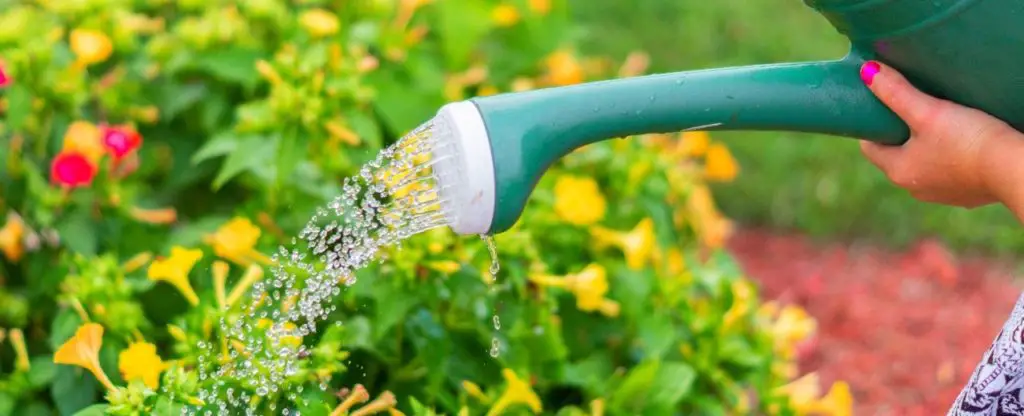
Like humans, plants also can’t live without water. It is an important component in the process of photosynthesis (food making process for plants). The onion needs a lot of water to grow healthy.
You should check the soil every day if you feel dry by touching your beds in the garden then water your onion plant until it becomes moist. Onions need about 1 inch of rainfall or irrigation per week.
Adequate water supply is an integral part in the growth of plants. Please make sure water moistens the soil about 6 inches down. Dryness is the enemy of plants, in the same way, drowning them is not a solution. It will diminish your harvest.
Light
Onion plants need at least 6 hours of light per day. So the location is important for successful growth. Make your raised bed in this way, it will get full exposure of sunlight. If you are growing them in portable containers, you can change their positions according to the sunlight.
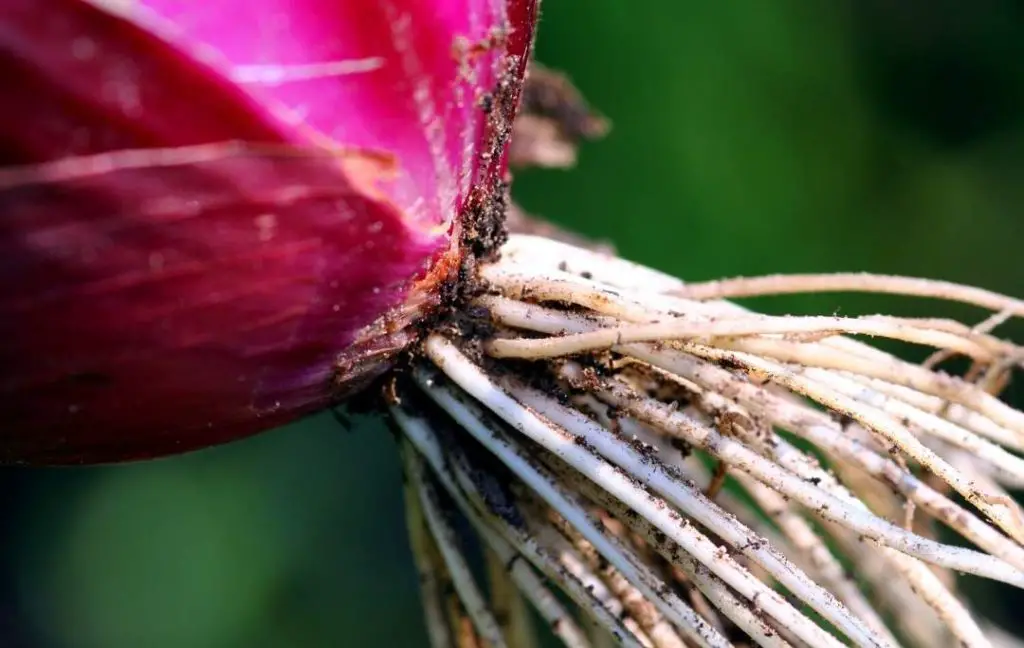
Temperature
The best temperature for the growth of onions is between 55 degrees to 75 degrees Fahrenheit. For green onions, early fall temperature should not be greater than 75 degrees. If you want to grow watery, soft, and grey bulbs of onions then your temperature should be more than 85 degrees Fahrenheit.
When to Harvest?
You can pull bulb onions when their tops dried over and fall off. Green onions can be harvested when the bulbs are no longer larger than the diameter of the leaves. You need sterilized scissors and pruners for harvesting onions.
Pull gently when you are harvesting them. When the tops are about 6 inches high, green onions are ready to be pulled. Let them lie on the soil for 2 to 3 days, when they become dry, you should move them to the area with good ventilation.
You can store green onions in the refrigerator for up to one week, for better storage you can wrap them in plastic wrap. Do not refrigerate mature onions.
Also Read:
Also Read: 10 Best DIY & Cheap Container Vegetable Gardening Ideas Anyone Can Use
Tips for growing onions
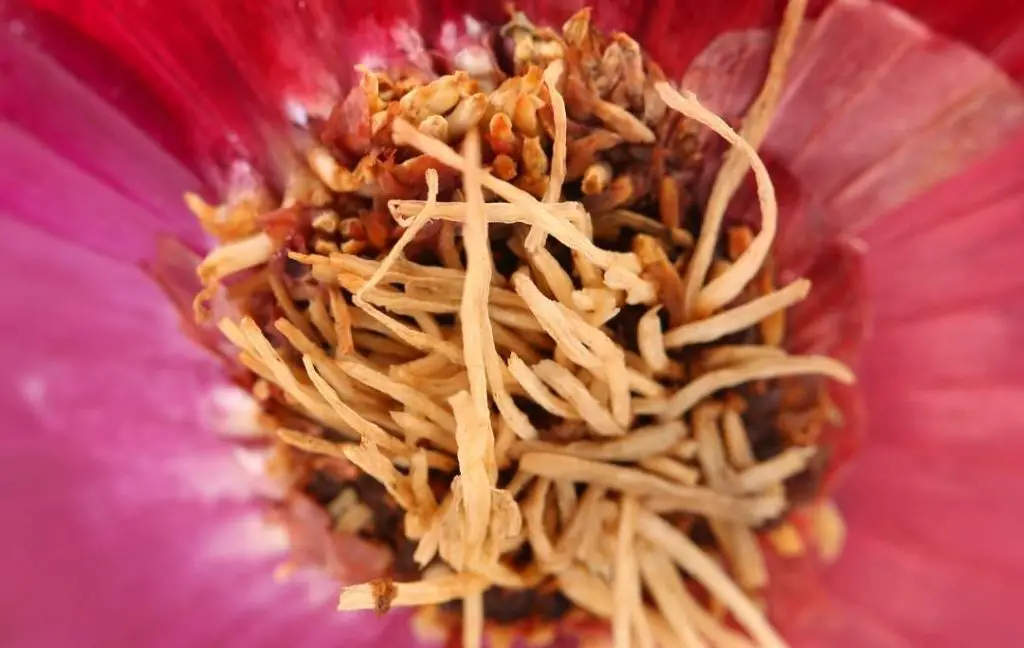
- Pull weeds and grasses from your garden before planting onions. If you don’t pull the weeds then there will be a competition between weeds and onion plants for light, water, and nutrients. Spread mulch which will help to surpass weed growth, it will also make it possible to increase the soil moisture.
- For harvesting, you need sterilized scissors or hand pruners. You should dip the blades of pruners or scissors in isopropyl. It will help to prevent your plants from diseases.
- About 1 inch of the tops and roots attached to the onions after harvesting.
- For indoor planting of onions, you can grow them any time of the year, but for outdoor spring plantation should be your priority.
- Please, remove all lumps, stones, and roots from the soil.
- You can grow beans near onion plants because bean roots fix nitrogen in the soil and onion plants like nitrogen-rich soil.
- Never plant onions near sweet potatoes because wireworms can attack onion plants.
- Use plant-friendly insect repellent for pests and small insects.


